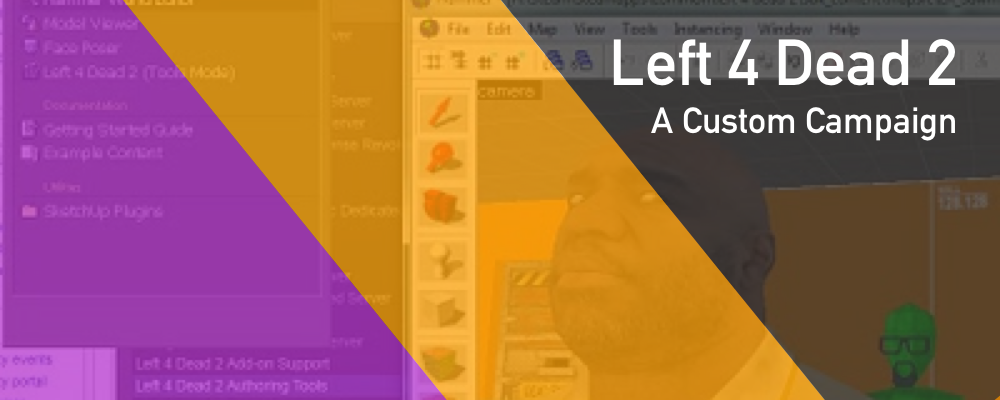I’ll let you guys in on my current secret project: with two friends in tow, I’m working on a series of levels (a.k.a. a campaign) for the highly rated Valve game Left 4 Dead 2. The purpose of this project is to add level design experience to my design portfolio as it will display a range of skills which should be helpful to future employers.

I’ve never worked on a full scale virtual map development project before - my closest experience was almost ten years ago when I tried replicating my high school in Counter-Strike (who didn’t? :)). Needless to say, I began this project as a complete beginner.
The tools haven’t changed much over the decade - Valve’s proprietary tools in the SDK (software development kit) are released for free with the game. The tool set is user-friendly and well maintained with lots of 1st and 3rd-party tutorials to help mappers of all proficiencies along for the ride (personally, I find the animated step-by-step tutorials on YouTube are priceless).
As with anything new, there’s a learning curve to overcome. For me the biggest challenge lies in translating a mental blueprint of the final result to something practical that resembles the intended design; all the while keeping within the SDK’s boundaries of possibility. Sometimes ideas work out well, sometimes they don’t, but it’s important on a practical (software) project of any kind to deploy a routine of regular testing - something I’ve made a habit of doing despite losing 15 minutes to compile times on each iteration (…admittedly, it does make a good excuse for a coffee break).
I’ve come to realise that mapping is a frustrating and rewarding experience but one that instils a certain discipline once the ball gets rolling. The name of the level I’m working on is called The Sawmill and I’ll update more with specifics in my next post.

